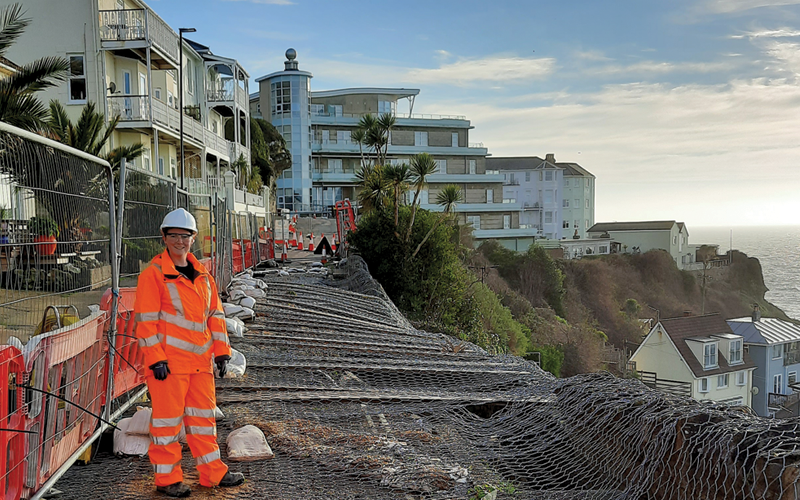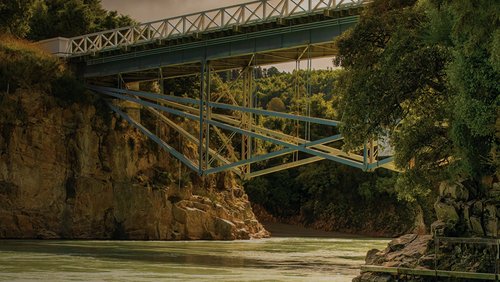7 Feb 2023
We caught up with New Zealander Jane Rendall who is the Principal Geotechnical Engineer at Atkins over in the United Kingdom.
I describe my role to non-engineers as…
A ground engineer. I do work to prevent buildings sinking into the ground, basements caving in and hillsides slipping away.
The part of my job that always surprises people is…
That it’s not just about earthquakes. In the UK, people think New Zealand must have more exciting geotechnical projects (because of the seismic risk). But this is one cool thing about geotechnical engineering: geohazards vary a lot across the globe. London has a lot of work related to ground movements (settlement/heave) of the prevalence of clay, which isn’t so common at home. I’ve also worked on projects in the Middle East where collapsible soils were the big issue.
The best emoji to sum up me on a typical workday is…
The best thing I’ve introduced at my workplace is…
Rocscience Settle3 software into the work IT systems and I’m now the software lead/champion for it.
In my role, I always challenge…
People (colleagues, clients, anyone really) when I think they are being unfair, whether demonstrating bias of some kind, or if I feel people in my team are being overlooked for promotion or recognition.
At work, I’ve never been afraid to…
Say what I really think.
In the past year, I’ve pushed boundaries by…
Saying what I really thought, and challenging unfairness no matter the seniority of the person I was talking to.

Image: Jane Rendall
I admire engineers who…
Love what they do, are innovative and get excited by projects they are contributing to. Technical directors and other subject matter experts who make time to help and guide the graduates. Also, engineers who aren’t afraid of thinking outside the boundaries set by conventional design.
At school, teachers always described me as…
Talkative (wouldn’t shut up) and bold.
My luckiest break was…
Being the geotechnical lead and project manager on a multidisciplinary project for remediation of an embankment failure on the M25 motorway near London. I was essentially thrown in at the deep end by someone who knew I would succeed (although at first I wasn’t so self-assured). I had a steep learning curve but gained so much knowledge and experience in a short space of time.
The bravest thing I’ve done to get where I am today…
Deciding after five years of university that I needed to study some more and find something I was really passionate about doing for a career.
Best career advice I’ve received…
Do something you enjoy doing (thanks Dad).
I’d advise other people interested in my type of role to…
Ask questions and be inquisitive. There are no dumb questions. No one knows everything, even technical directors have areas of weaker knowledge. And get used to playing with dirt – geotech engineering isn’t a tidy job.
3 things I love about my job:
- The uncertainty of geotechnical engineering – there’s no single answer to any problem and no single value to attribute to materials. There’s a lot of judgement and risk evaluation.
- No two projects are the same. At any one point I could be working on a mixture of projects comprising: foundations for a new building, remediation of landslips or sinkholes, modifications to existing earthworks on highways to increase capacity, or undertaking ground movement assessments for developments. Almost all aspects of civil engineering have some interaction with the ground so my work covers multiple markets and industries.
- I get to do aspects of design, project and stakeholder management, plus people management and interacting with contractors, clients and colleagues.
2 reasons why I chose to study engineering:
- I got a lot of satisfaction out of solving physics and mathematics problems at school and university.
- I also loved new buildings and houses so I thought I would study to be a structural engineer. I didn’t discover geotechnical engineering until I was already at university but was hooked from the first paper.
1 thing I wouldn’t change about my workday:
The variety of work, and the people.
This article was first published in the December 2022 issue of EG. The full version of EG is available in your member area.




